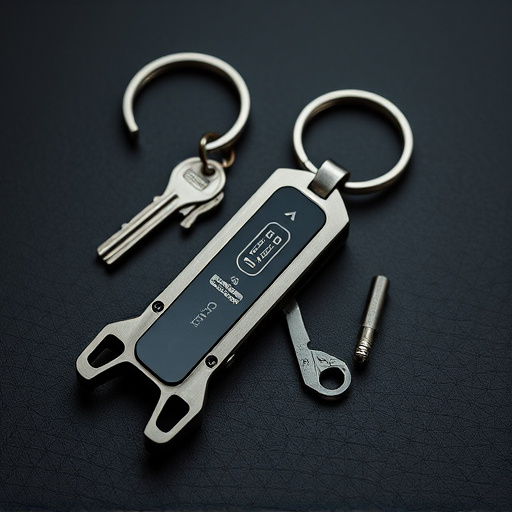Carrying a keychain weapon requires understanding local Keychain Weapon Permit Requirements, including background checks, age limits, and training certifications. Prioritize safety by choosing tools with robust build quality and advanced locking mechanisms, while adhering to best practices for storage, carrying, and maintenance to ensure legality and effectiveness. Regularly review local laws to remain compliant, especially in households with children or pets.
In today’s world, self-defense options are becoming increasingly portable with the rise of keychain weapons. However, navigating legalities and safety features is crucial before considering such a tool. This article delves into the intricacies of keychain weapon permit requirements, exploring essential safety features and best practices for storage and carrying these compact self-defense devices. Understanding these aspects ensures responsible ownership and optimal protection.
- Understanding Keychain Weapon Legalities and Permit Requirements
- Essential Safety Features for Portable Keychain Weapons
- Best Practices for Storing and Carrying Keychain Self-Defense Tools
Understanding Keychain Weapon Legalities and Permit Requirements
In many jurisdictions, the legality of carrying a keychain weapon varies significantly, with some regions allowing it under specific conditions while others prohibit it altogether. Before considering acquiring a keychain weapon, understanding your local laws and permit requirements is crucial. Each country and state has its own set of regulations governing concealed carry weapons, including keychain knives or self-defense tools.
Keychain weapon permit requirements often involve background checks, age restrictions, training certifications, and application processes. Some regions may mandate that individuals seeking a permit for a keychain weapon have a valid reason, such as personal protection or specific occupational needs. It’s essential to stay informed about these legalities to ensure compliance and avoid any potential legal repercussions.
Essential Safety Features for Portable Keychain Weapons
When considering a portable keychain weapon, safety should always be the top priority. These compact devices are designed to provide personal protection in various situations, but they come with inherent risks if not handled responsibly. Essential Safety Features for Portable Keychain Weapons include robust build quality that ensures durability and reliability under stress. Additionally, an advanced locking mechanism is crucial; this feature prevents accidental deployment and secures the weapon until the user intends to use it.
Furthermore, compliance with local keychain weapon permit requirements is non-negotiable. Understanding and adhering to these regulations not only ensures legal safety but also instills a sense of responsibility in users. Many regions have specific guidelines for carrying concealed weapons, and portable keychain devices should meet or exceed these standards to guarantee the safety of both the user and those around them.
Best Practices for Storing and Carrying Keychain Self-Defense Tools
When storing and carrying a keychain self-defense tool, adhering to best practices is essential for safety and legality. Always keep your keychain weapon in its protective case or sheath to prevent accidental activation and to comply with carry permit requirements. Store it in a secure location that only you have access to, such as a locked drawer or safe, especially if children or pets are present in the household. Additionally, familiarize yourself with local laws regarding hidden carry weapons, including any keychain weapon permit requirements, to ensure compliance and reduce the risk of legal repercussions.
While on-the-go, secure your keychain defense tool by attaching it to a lanyard or using a belt clip, keeping it within easy reach but securely out of sight. Avoid leaving it unattended in public places, as this increases the risk of loss or theft. Regularly inspect the tool for any signs of damage or wear and ensure the functionality of the mechanism before each use. By following these simple yet crucial best practices, you can maximize the safety and effectiveness of your keychain self-defense weapon while ensuring compliance with legal requirements.
Carrying a portable keychain weapon can be a powerful means of self-defense, but it’s crucial to understand the legalities and safety features involved. With the right knowledge and responsible practices, including obtaining the necessary keychain weapon permit requirements, you can ensure these compact tools serve their purpose while prioritizing safety. Always remember to store and carry them securely, as outlined in this guide, to maintain control and promote a safer environment.
